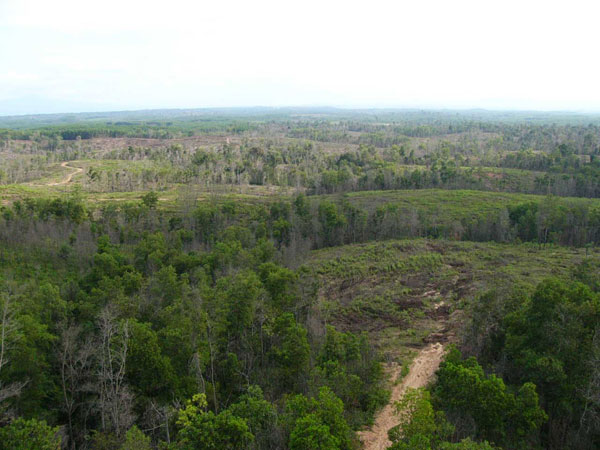Research Theme for the G-COE Program: FUJITA, Motoko
I have been interested in the role of birds in nutrient cycling in forest ecosystems. Urbanization has caused both an increase of birds, such as crows, and forest fragmentation. As a result, birds feeding in residential areas transport feces-derived N and P from residential areas to the fragmented forest. To know what is happening in terms of ecology in a human-modified environment is significant when we decide how society should be. I have conducted a survey of the bird community, a chemical analysis and a stable isotope analysis in the temperate forest ecosystem of Japan. But tropical forests are much more important ecosystems in the world, because they are at the forefront of environmental change as forests decrease, which is causing biodiversity to decrease and even global warming. That is, tropical forests should be considered as the key ecosystem in order to sustain our life. Therefore, the ecological effects of forest decrease should be clarified especially in the context of the tropical region. Moreover, the significance of maintaining biodiversity in terms of nutrient cycling is still not known. How the decrease in biodiversity affects the nutrient cycling might also be my research theme.
Ecosystem services and biodiversity in tropical area
Biodiversity is described as “the diversity of life on Earth” and is essential for the functioning of ecosystems which provide ecosystem services that ultimately affect human well being. Biodiversity is the variability among living organisms from all sources, including terrestrial, marine, and other aquatic eco-systems and the ecological complexes of which they are part of; this includes intra- and interspecies diversity and the diversity of ecosystems. Ecosystem denotes the biological community together with the abiotic environment in which it is set and includes various spatial scales. Ecosystem services include provisioning services such as food, water, timber, and fiber; regulating services that affect climate, floods, disease, wastes, and water quality; cultural services that provide recreational, aesthetic, and spiritual benefits; and supporting services such as soil formation, photosynthesis, and nutrient cycling. These ecosystem services are important for the human well-being, because we obtain many services from healthy ecosystems, which stand on the basis of biodiversity and ecosystem functions. But nowadays global changes in climate, biochemical cycles, land use and species introduction affect biodiversity and ecosystem functions, and are also degrading ecosystem services. Tropical forests contain high biodiversity, and are considered to have rich ecosystem services at the same time. The decline of tropical forests is caused by shifting cultivation, mining, increasing plantation for rubber, oil palm and acacia, etc. The extinction of many species is not the only concern, the threat of poor ecosystem services is also a great issue. I would like to clarify the effects of huge Acacia mangium plantations in Sumatra, Indonesia on ecosystem services.
Landscape structures that maintain bird species diversity
The largest impact on the decrease of ecosystem services in a tropical forest is habitat degradation. A suitable design for landscape structure and management procedures is needed in order to maintain biodiversity. The primary objective of this study is to clarify the differences in bird species diversity between conserved secondary forest and Acacia mangium plantations. I focus on the change of avifauna along the distance from conserved secondary forest which may act as a species source, and the age of Acacia plantation. I would like to clarify how we should decide the landscape which functions as the bird-diverse habitat.
Bird diversity and its effect on nutrient cycling
But we still do not have clear answer for the significance of maintaining bird species diversity, in other words, we do not know why we should conserve biodiversity. Therefore, we need to clarify which ecosystem services are provided by conserving biodiversity. I focus on the nutrient cycling, especially nutrient transport inside landscape by bird feces. The second objective is to clarify the contribution of the transported bird feces between Acacia plantation and other landscape constituents, in terms of nutrient cycling as Nitrogen and Phosphorus.
The ultimate goal of this study is to investigate how we can maintain biodiversity and ecosystem services in Acacia plantation.

Photo 1. Acacia plantation in Sumatra, Indonesia. Clear-cut in 6 years.